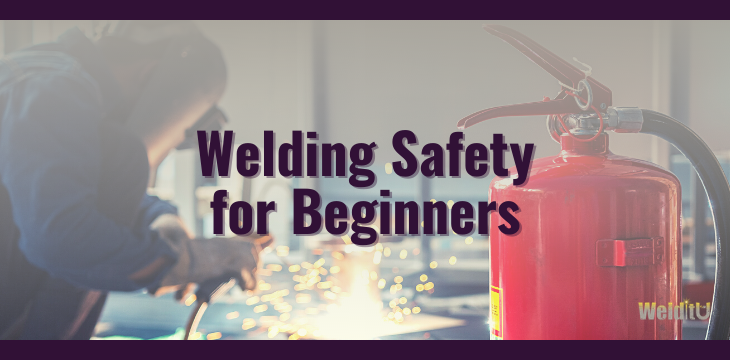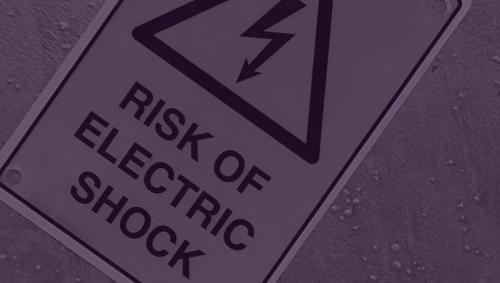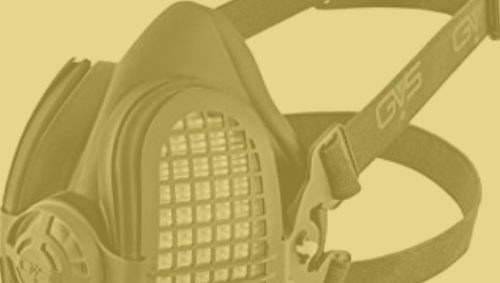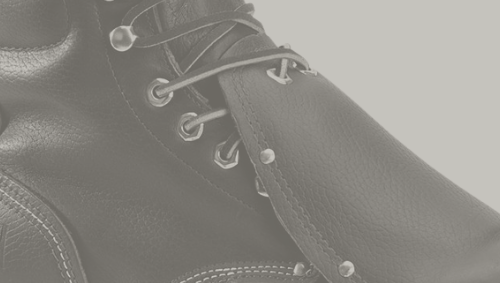Welding Safety for Beginners
Learning to weld leads to an enjoyable and useful skill.
But like many rewarding activities, it is possible to get hurt. Beginner welders who understand welding hazards and follow safety procedures can minimize their exposure to risk.
This article covers the four steps of welding safety for beginners:

What are the Safety Hazards of Welding?
Electric Shock
Because arc welding creates heat using electrical current, electrical shock is usually at the forefront of concerns for new welders.
The key to staying safe with electricity is to avoid becoming part of the circuit. When you weld, you’re exposed to two types of circuits.
The primary, or supply voltage, can range from 120 to 460 volts. You can contact this voltage through a bad plug or power cord, or while working inside the welder case with power applied.
The secondary circuit supplies the voltage used to weld. This working voltage varies from 20 to 100 volts.
While this is less than the primary voltage, it takes less than 50 volts to cause injury or even death. The most direct way to become part of the secondary circuits is to have contact with an energized electrode and the work clamp at the same time.
The level of shock you would receive depends on how well you connect to the circuit. Heavy leather gloves, garments, and rubber-soled boots all help insulate you from shock. This protection can vanish when items become damp or wet.
Electromagnetic fields may interfere with pacemakers and hearing aids. Consult your doctor before you weld with these devices.

Exposure to UV and IR Radiation
An arc welder generates intense visible ultraviolet and infrared radiation that can cause short-term and long-term damage.
Eye Damage
Even only a few seconds of unprotected exposure to the arc can damage your eyes.
A temporary, but painful condition is known as “arc eye” and causes pressure and a sense of grit or sand in your eyes, with extra sensitivity to light.
Long-term risks include the development of cataracts.
Skin Damage
Just like a sunburn, the arc can quickly burn unprotected skin. Long-term risk of skin cancer is possible.
Exposure to Fumes and Gases
Anyone familiar with the acrid smell of welding fumes isn’t surprised to learn that they’re dangerous to your health.
They’re basically a mixture of metallic oxides, fluorides, and silicates that can contain a wide assortment of metal particles and chemicals.
Breathing welding fumes can cause short-term eye, nose, and throat irritation, dizziness, and nausea.
Extensive and prolonged exposure to fumes may cause lung damage and various types of cancer that can affect the lungs, larynx, and urinary tract.
Nervous system damage along with stomach ulcers and kidney damage are also possible.
The amount of fumes generated varies by the welding method. They’re ranked here from highest to lowest:
- Flux cored arc welding (FCAW)
- Stick welding – shielded metal arc welding (SMAW)
- MIG welding – gas metal arc welding (GMAW)
- TIG welding – gas tungsten arc welding (GTAW)
A TIG or MIG welder uses a shielding gas, and a welding process creates other gases. These include argon, helium, nitrogen, carbon dioxide, nitric oxide, nitrogen dioxide, carbon monoxide, ozone, phosgene, hydrogen fluoride, and carbon dioxide.
When welding in confined spaces, fume and gas concentrations will increase. Using shielding gases such as helium argon and carbon dioxide poses a risk of suffocation because these gases displace oxygen in the air.

Fires and Explosions
Your welding arc may reach a temperature of 10,000 degrees and can throw hot sparks and spatter up to 35 feet. There is a risk of igniting any flammable liquid, gas, or solids in the vicinity.
And don’t overlook the possibility of airborne combustibles. With the right conditions, many materials may ignite from a welding operation. A few examples are:
- Metal Dust – Such as Aluminum and Magnesium
- Wood Dust
- Coal and Other Carbon Dusts
- Plastic Dust and Additives
- Biosolids
- Organic Dust – Sugar, Flour, Paper, Soap, Dried Blood
- Certain Textile Materials
Used with gas welding, acetylene and oxygen gases are extremely flammable and must be handled with caution.
Large compressed gas cylinders are heavy and awkward to handle. Most are prone to tipping over and a falling bottle could injure you. And should a valve snap off, the released gas could propel the bottle like a missile, causing injury and damage.
Physical Injuries
Burns, cuts, abrasions, and impact injuries are common with welding activities. Welders frequently handle hot, sharp metal pieces and heavy metal materials. Using power tools to cut, drill, grind, and otherwise shape their work also increases the risk of injury.
Having good eyesight is critical to a welder. Unfortunately, the eyes are vulnerable to serious welding injuries. Besides the risk of fumes and radiation we’ve already mentioned, the intense brightness of the welding arc can damage your eyes. Another threat is flying debris from welding, cutting, chipping, brushing, or grinding activities.
Temporary eye strain can result from the effort required to concentrate on the weld pool while welding.
Noise from welding and metalworking activities can cause occasional dizziness known as vertigo and increase both heart rate and blood pressure. Some welders develop tinnitus or ringing in the ears.
Trips and falls are common. Cords and cables from welding machines and other power tools, along with materials on the floor, can present a tripping hazard in the work area. Even wearing the proper PPE may interfere with your peripheral vision or cause disorientation and lead to falls.
Heat-related injuries such as heat stroke, heat exhaustion, heat cramps, fainting, heat rash, and others are possible in hot environments, especially when wearing heavy protective clothing.
Repeated motions performed during welding or related activities can lead to repetitive strain injuries. Extensive use of grinders or other vibrating power tools may cause nerve damage in the hands.
How to Stay Safe While Welding?
As you’ve read, welding is an activity with many sources of trouble.
While accidents will happen, the good news is that education, common sense, and personal discipline go a long way towards reducing the risk and severity of injuries.
Here’s what you can do to be safer and reduce your chances of injury.

Always Wear Your PPE
Always wear your PPE. Head-to-toe. Always.
When you’re trying to learn a new skill, the last thing you want to do is cover yourself head to toe in personal protective equipment (PPE). It’s awkward at first and makes it harder to see, hear, or feel what you’re doing.
But if you leave yourself exposed, this may distract you enough to cause other mistakes. On the other hand, knowing that you’re well-protected will help you focus on learning, so you’ll make faster progress. Trust me on this.
This is the best time to develop the discipline to wear proper safety gear every time you weld or work with metal.
You’ll want to protect all parts of your body.
Skin
If you leave an exposed patch of skin, the radiation, hot sparks, or slag will find it.
Always wear a long-sleeved flame-resistant shirt with a tall, button-collar that fits closely around the neck. It should either have no outside pockets or have covered pockets, to avoid catching hot debris.
Wear flame-resistant pants without cuffs. You want your pants long enough to cover the tops of your footwear, even while squatting. Here’s more on choosing the best pants for welding.
Eyes & Face
Your eyes are too important to put at risk, so wear at least one form of eye protection at all times. Put on a pair of clean, scratch-free safety glasses before you work, and don’t take them off until you turn off the lights.
Close-fitting glasses provide secondary protection from fumes and debris that may get around your face shield. Also, they will protect you while your hood is up.
Beginners will benefit from an auto-darkening welding helmet with grind mode. The correct lens shade will protect your eyes and face from radiation and flying debris. If needed, add a flap to the helmet to protect any exposed area on your neck.
A close-fitting cap, or “beanie”, can keep sparks from igniting your hair and help absorb sweat.

Ears
The right earplugs or noise-canceling earbuds do a good of protecting your ears from high noise levels while allowing verbal communication.
While welding, these also help keep debris from entering your ear. No one wants to know what hot spatter feels like in your ear canal.
If you wear a cap under your helmet, look for a style with a flap that can cover an ear. Cover your left ear if you’re right-handed.
Lungs
At the very least, observe the airflow in your work area and position yourself to avoid the fumes from welding.
But knowing just how toxic fumes can be, it makes sense to always wear a respirator. Slim filters that fit underneath your hood are available that can protect you from even the most dangerous fumes.
Feet
Wear sturdy leather footwear without exposed laces that can trap sparks or spatter. Rubber soles are a must to protect from electrical shock.
Steel toe welding boots with metatarsal guards protect your feet from the impact of heavy materials. Even if you don’t plan to use heavy materials, remember that even a four-pound power tool that lands the right (or wrong) way can break fragile bones in your foot.
Hands
Once you begin to weld, you must assume every piece of metal is hot. It’s convenient that many metals will glow to warn you they’re super hot, but a 500-degree piece of metal looks the same as one at room temperature. Don’t grab anything with bare hands.
Protect yourself from hot materials with sturdy welding gloves that extend up your arm. These can provide protection from sharp metal edges and electrical shock, as long as they remain dry and in good condition.
Yes, wearing proper PPE can make a hot job even more uncomfortable, but it’s important to always maintain your protection. In hot weather, you can wear lighter weight PPE but don’t eliminate protection and leave yourself exposed.
Take breaks to avoid getting overheated and stay hydrated. And be sure to change out of sweat-soaked clothing and gloves.
This 13-minute video provides a clear presentation of welding safety:
Know Your Equipment
It’s natural for beginners to want to jump in and start welding. But take the time to read and understand the owner’s manuals for your welding equipment.
You’ll be more comfortable with its operation, and the better manufacturers provide more detailed safety tips and precautions.
It’s always important that your welding machine is properly installed and grounded. The welder must not overload the electrical circuit. And don’t assume it is wired properly. Take the time to check for proper ground. It can save your life if something goes wrong.
More tips to keep in mind:
- Inspect for damage to welder, especially cables and cords
- Disconnect power when working inside the cabinet
- Securely attach the work clamp close to the weld.
- Secure or clamp materials before you weld, cut, or grind to allow use of both hands to control the tool
- Never rush
Maintain a Safe Work Area
Once you’re outfitted with the proper PPE and understand how to operate your equipment, your next step is to evaluate your work area for safety.
Here are three keys to a safe welding area.
Proper ventilation
Always position yourself to avoid the cloud of fumes generated by welding. Set up general ventilation to pull the fumes away from your work area. High ceilings, 16 feet or taller, can help to dissipate fumes. Spot fume extractors are useful when working in a small area.
If your eyes, nose, or throat becomes irritated, stop welding. This is a sign you don’t have enough ventilation.
When possible, clean and remove toxic coatings from material to be welded, such as galvanizing zinc. But remember that grinding can also release harmful vapors and particles.
Respirators are recommended for any welding activities but are a must for work on more hazardous materials, coatings, and fluxes.
Avoid working in confined spaces, but use a respirator if you do. And never weld alone.

Fire Prevention
Sparks can travel up to 35 feet and can enter the smallest crevice. Keep the work area clean, and clear flammable materials from the vicinity. Seal cracks and gaps in walls and floors.
Look for liquids such as gasoline, oil, and paint; solids such as cardboard, paper, and wood; and gases such as acetylene, propane, or hydrogen.
If you’re unable to remove all flammable materials from the work area, cover them tightly with welding blankets, and get a partner to keep watch for stray sparks or fire.
Have firefighting materials at hand to douse smoldering material or small fires:
- Fire extinguisher
- Water hose
- Sand bucket
Don’t weld, cut, or grind on used drums, barrels, pipes, or tanks that contained flammable or toxic materials.
Beware of dust. Heavy dust or lint can burn, and many airborne dust particles are explosive and can be ignited by a spark.
Remain in the work area for at least 30 minutes after work finishes to observe for smoldering materials. Check back later if possible.
Stay Organized
- Keep work area clear of clutter
- Occasionally take a break to sweep up debris and remove materials that pose a trip hazard
- Always have fire suppression gear at hand
- Keep work area dry to reduce risk of electrical shock and slips
- Provide bright work area lighting to improve visibility and reduce trips and falls
- Use spot lighting or helmet lights to further brighten the work area and reduce eye strain
- Secure gas cylinders to a cart or a stationary object
- Protect bystanders from hazards by using screens, blankets, and signs
The bottom line
It’s not unusual to see adherence to safety protocol for new welders decrease as confidence increases. The key to long-term safety for beginner welders is to develop good safety discipline early on and resist complacency as their skills improve.
Understanding the risks, knowing your equipment, always wearing PPE, and maintaining a safe work area will reduce the frequency and severity of accidents or injuries.
Take the American Welding Society’s (AWS) free Safety in Welding course or download their 70-page welding safety standards to learn more.

